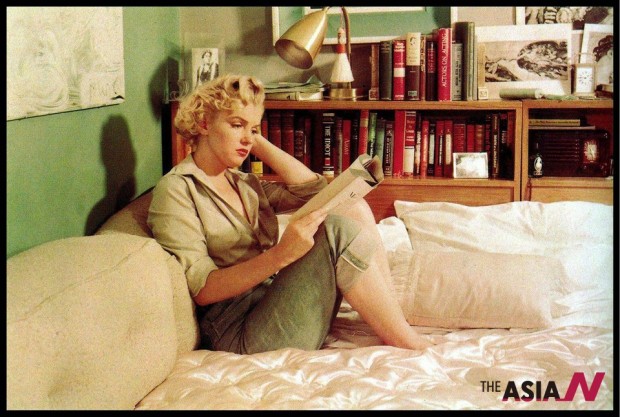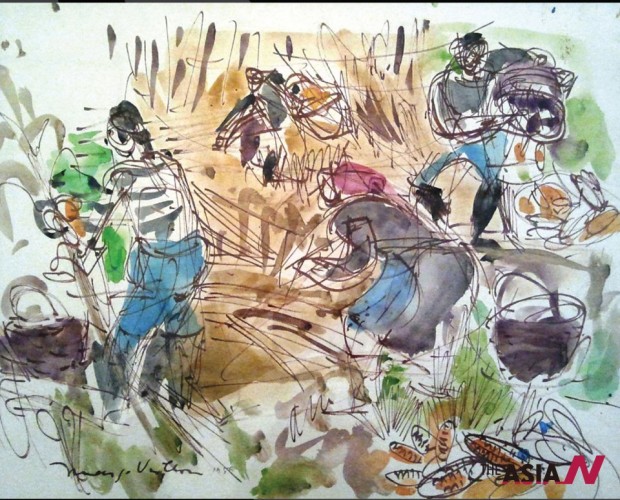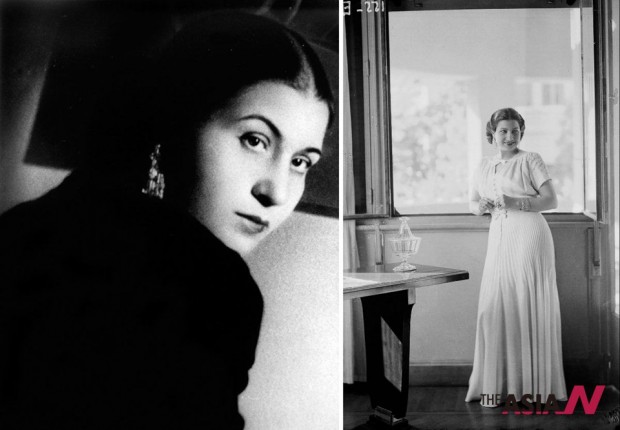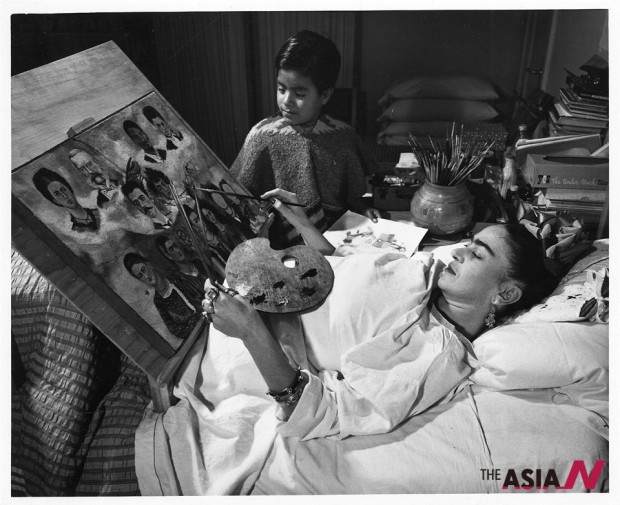The Feminine ‘N’, the River of Art
My new book entitled “The Feminine (N), the River of Art” was published in Cairo a few days ago. In Arabic language the letter (N), or (Noon) as it is pronounced, and (ن ) as its written is considered to be a symbol of women, in the Arabic culture. In most of the Arabic verbs, the letter (ن) is added as a symbol of plural acting women in grammar.
This is the secret of the title, but the book reveals many other secrets, as well. It is natural that a book on women should have its unique nature, and the women unique secrets! But why do I put focus on women in this very first article in (N) magazine?
The oppression of woman
In August 2009, a decree of law was enacted in Afghanistan that criminalizes more than 20 types of violence against women, including child marriage, forced marriage, rape, marriage reconciliation (ie: the bride is given to marry one of the enemies in order to settle disputes between two families or tribes!) and marriage of underage girls, as well as to criminalize beatings and denial of inheritance, which used to be a common practice in particular rural areas of Afghanistan.
Unfortunately, Afghan MPs are opposing the application of that certain law to the day, because they say that it is against Islam! So in the name of Islam, the authoritarian powers of the society are forcing women to stay at their homes, waiting for vague destiny, that they did not plan to, neither did they accept it.
Now such backward ideas are exceeding rural Afghanistan to other cities, and moving from Afghanistan to other countries, and spreading from Asia to Africa, with the new rulers in the Middle East. The ideas of the Dark Ages are currently used by politicians to adapt the control of women, whom I consider to be the backbone of urbanization and development in modern societies.
Lady icons of cinema
So in these critical times, we need to recall some lady icons, who are well known, but they also suffered in a way or another, to live and create. The first of all secrets, I refer here to, is that the icon of cinema; Marilyn Monroe, was not only having the famous image of seduction, but she suffered her private life, and wrote real poems narrating her sufferings.
Marilyn Monroe’s private poetry, scribbled in notebooks and on loose-leaf papers, reveals a complex, sensitive being who peered deeply into her own psyche and thought intensely about the world and other people:
Only parts of us will ever
touch parts of others –
one’s own truth is just that really — one’s own truth.
We can only share the part that is within another’s knowing acceptable
is for most part alone.
As it is meant to be in
evidently in nature — at best perhaps it could make
our understanding seek
another’s loneliness out
……
Life –
I am of both of your directions
Somehow remaining hanging downward
the most
but strong as a cobweb in the
wind — I exist more with the cold glistening frost.
But my beaded rays have the colors I’ve
seen in a painting — ah life they
have cheated you.
Lady icons of poetry
In the realm of poetry, I also chose to introduce the first poetess in the history. Her surviving fragments (poems) are well-known and greatly admired.
As most of the characters mentioned in my book, Sappho suffered a lot. She was exiled to Sicily sometime between 604 BCE and 594 BCE and Cicero records that a statue of her stood in the town-hall of Syracuse. Unlike the works of her fellow poet, Alcaeus, Sappho’s poetry has very few allusions to political conditions. She devoted her life to take care of those young girls to prepare them for being brides. It is assumed that Sappho returned from exile at some point and that she spent most of her life in Lesbos.
The third revolutionary icon was Fadwa Touqan, the Palestinian poetess whose biography “A Mountain Trip, A Hard Trip” was my bible since I start reading its chapters during my early university years.
In that Biography, that she gifted me as a published volume when I met her in Muscat some 15 years ago, I learned a lot. Fadwa Touqan, who did not marry, was the bride of the Palestinian poetry, and lived a very tough life under the occupation of Israel. She witnessed how the occupying forces were throwing citizens out of their homes, and her poetry kept itself to be the diaries of her nation. When my youngest girl was born, she was given the name of Fadwa.
Lady icons of art
Away of poetesses, I wrote about four other women, who are artists. The first is Margo Veillon, who is considered one of Egypt’s best loved artists.
She was born in Cairo in 1907, the daughter of a Swiss businessman and his Austrian wife. She has spent much of her artistic career capturing the verve and movement of daily life in Egypt, until her absence in 2003. Her work is a representation of her life across the decades of her career as well as across a variety of media. Although Margo has lived part of her life in Europe, it is clearly Egypt that has held her imagination in all these long years of artistic innovation.
The stones, sands, and constantly changing light of the desert have been the inspiration for many years for another major line of artistic expression. Her exploration of all that can be seen, and sensed, in her collection that are now exhibited in permanent ballroom, with her name in the AUC.
The second is Frida Kahlo de Rivera (July 6, 1907 – July 13, 1954), who was a real example of a suffering woman. The Mexican painter, perhaps best known for her self-portraits, Kahlo’s work is remembered for its “pain and passion”, and its intense, vibrant colors. Her work has been celebrated in Mexico as emblematic of national and indigenous tradition, and by feminists for its uncompromising depiction of the female experience and form.
Her work has also been described as “surrealist”, and in 1938 one surrealist described Kahlo herself as a “ribbon around a bomb”.
Kahlo suffered lifelong health problems, many of which stemmed from a traffic accident in her teenage years. These issues are reflected in her works, more than half of which are self-portraits of one sort or another. Kahlo suggested, “I paint myself because I am so often alone and because I am the subject I know best.”
The third woman artist was a real discovery when I found that the pioneering character of the Turkish art was Celile Hanim, the mother of the world known poet Nazim Hikmet.
She assisted her son during his years in prison, and used to demonstrate in front of the jail carrying a sign asking authorities to release him. In art, she was so brave to focus on nudes, and when she was giving one of her paintings to a friend or a family member she had one condition, to hang the painting not in the bedroom, but in the sitting room to be seen by everyone!
The seventh icon of “the River of Art” was Umm Kulthum, the Arab world singer number 1, who came from a tiny village in Egypt to be the symbol of classic singing forever. In the book, the discovery related to Umm Kulthum was that she also was a short story writer, some talent that not everyone was aware of.






























































